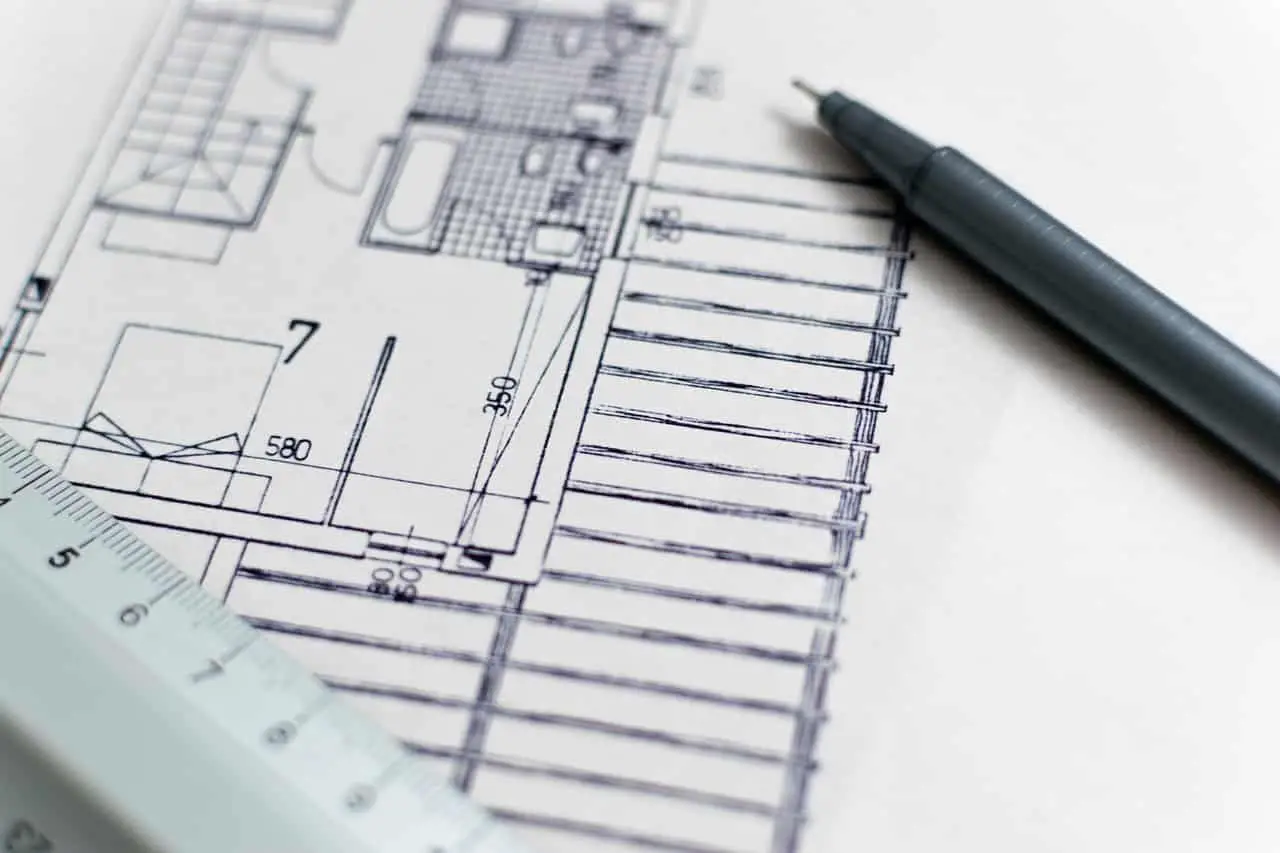Studying architecture abroad has become increasingly popular in recent years, with many students seeking to broaden their horizons and gain valuable experience in different cultures. Undertaking a study abroad program can provide a range of benefits, including exposure to different design traditions, access to new technologies, and the opportunity to work on real-world projects in different contexts. However, choosing the right program can be challenging, with many factors to consider such as location, language requirements, and course content.
In this article, we will examine the benefits of studying architecture abroad, the different types of study abroad programs available, and the factors that students should consider when choosing a program. We will also provide tips for making the most of your study abroad experience, including advice from students who have previously undertaken study abroad programs. Finally, we will explore case studies of successful study abroad experiences, as well as challenges that students may face and potential solutions.
By the end of this article, readers will have a comprehensive understanding of the study abroad options available to architecture students, and be better equipped to make informed decisions about their own study abroad experiences.
Key Takeaways
- Studying architecture abroad provides exposure to different design traditions, new technologies, and real-world projects in different contexts.
- Factors to consider when choosing a program include location, language requirements, and course content.
- Language requirements and cost are essential factors to consider, but scholarships and financial aid may be available to offset cost.
- Maximizing the potential of a study abroad experience requires careful planning, embracing cultural differences, and commitment to academic excellence.
Benefits of Studying Architecture Abroad
The advantages of pursuing architectural studies overseas include exposure to diverse cultural perspectives, immersion in unique architectural styles, and the opportunity to develop a global network of professional contacts.
Studying abroad in a new environment allows students to broaden their perspectives and gain a deeper understanding of the cultural context in which they are designing. This can lead to unique and innovative design solutions that are informed by the local cultural and historical context.
Additionally, experiencing different architectural styles firsthand can inspire students to think outside the box and incorporate new design elements and techniques into their own work.
Moreover, studying architecture abroad provides an opportunity to develop a global network of professional contacts that can be invaluable for future career opportunities. Building relationships with professionals in the field can lead to internships, job opportunities, and collaborations. It also allows for exposure to different approaches to architectural design and construction, expanding a student’s knowledge and understanding of the industry as a whole.
Overall, studying architecture abroad provides a unique and enriching experience that can lead to personal and professional growth, and provide a competitive advantage in the field.
Types of Study Abroad Programs
Various options are available to students who wish to expand their educational experience by participating in a foreign academic program. These options include short-term programs, semester-long programs, and full-year programs. Short-term programs usually last for about two to eight weeks and are designed to provide students with a brief immersion experience in a foreign culture. Semester-long programs, on the other hand, last for one semester, which is typically four to six months, and allow students to engage more deeply with the host culture and academic community. Full-year programs, as the name suggests, last for a full academic year and provide students with ample time to learn a new language, build relationships, and gain a deeper understanding of the host country’s architecture and culture.
To emphasize the point that studying architecture abroad can provide students with a unique and immersive experience, the following table compares the curriculum of an architecture program in the United States with a similar program in Italy:
| Curriculum Component | Architecture Program in the United States | Architecture Program in Italy |
|---|---|---|
| History of Architecture | Focused on Western architectural movements | Emphasis on Italian architecture and urban design |
| Studio Courses | Emphasis on individual projects and experimentation | Emphasis on group projects and collaborative design |
| Cultural Immersion | Limited opportunities for cultural immersion | Opportunities to explore Italian culture and lifestyle outside of the classroom |
Students who wish to expand their educational experience and gain a deeper understanding of architecture and culture should consider studying abroad. Various programs are available that cater to different needs and goals, including short-term, semester-long, and full-year programs. By studying abroad, students can gain a unique and immersive experience that can broaden their horizons and contribute to their personal and professional development.
Factors to Consider When Choosing a Program
When selecting a study abroad program in architecture, several factors must be considered. Location is a critical factor to consider since it affects the cultural, social, and environmental context of the program.
Curriculum is another critical factor since it determines the type of education that will be received and the level of exposure to the architectural concepts and practices.
Language requirements and cost are also essential factors to consider since they can impact the accessibility and affordability of the program.
Therefore, prospective students should carefully evaluate these factors to ensure that they choose a program that aligns with their academic and personal goals.
Location
Location plays a significant role in the study abroad experience for architecture students, as it can provide unique opportunities for exposure to different cultural and architectural contexts. The location of a study abroad program can greatly influence the curriculum and the types of design projects that students will be working on.
For instance, a program in Europe may offer students the opportunity to study historic architecture and design in iconic cities such as Paris, Rome, or Barcelona. On the other hand, a program in Asia may expose students to contemporary architecture and design in cities like Tokyo, Seoul, or Shanghai.
Moreover, the location of a study abroad program can also have an impact on the social and cultural aspects of the experience. Students may have the chance to learn about the customs, traditions, and ways of life of the local community, which can broaden their perspective and foster cross-cultural understanding.
Additionally, students may have the opportunity to participate in local events and activities, such as festivals, exhibitions, or lectures, which can enhance their learning experience and enrich their personal growth. Thus, the location of a study abroad program should be carefully considered in order to maximize the benefits and opportunities that it can offer to architecture students.
Curriculum
The design curriculum of a study abroad program in architecture is a crucial aspect to consider, as it determines the scope of knowledge and skills that students will acquire during their time overseas. One important factor to consider is the structure of the program’s courses. A well-designed curriculum should provide a balance of theoretical and practical coursework, allowing students to develop a strong foundation in architectural theory and history, as well as hands-on experience in design and construction.
Another important consideration is the range of design projects offered within the program. A diverse range of design projects will expose students to different design challenges, contexts, and cultural influences. This can help students develop a broad skill set, as well as a deeper understanding of the cultural and social implications of architecture. Some examples of design projects that could be included in a study abroad program in architecture are:
- Adaptive reuse projects that repurpose existing buildings for new uses
- Urban design projects that explore the relationship between buildings, public spaces, and infrastructure
- Sustainable design projects that focus on environmental and social sustainability
- Cultural heritage preservation projects that aim to preserve and restore historic buildings and sites.
By offering a diverse range of design projects, a study abroad program in architecture can provide students with a unique learning experience that combines theoretical and practical knowledge, cultural immersion, and personal growth.
Language Requirements
In addition to the curriculum, another important aspect of architect school study abroad programs to consider is the language requirements. These requirements can vary depending on the program, the country, and the institution. It is important for students to research and understand the language requirements before applying to a specific program.
Some programs may require students to have a certain level of proficiency in the language of instruction, while others may offer language courses as part of the program. In some cases, students may be required to take language proficiency exams before being accepted into the program. The table below provides examples of language requirements for architect school study abroad programs in different countries.
| Country | Program | Language Requirement |
|---|---|---|
| Italy | Politecnico di Milano | B1 level in Italian |
| Spain | Universidad Politécnica de Madrid | B2 level in Spanish |
| France | École Nationale Supérieure d’Architecture de Paris-La Villette | C1 level in French |
| Japan | Tokyo Institute of Technology | No language requirement, but recommended to have basic Japanese language skills |
| Germany | Technical University of Munich | C1 level in German |
Understanding the language requirements is important for students to ensure they have the necessary language skills to succeed in the program and fully immerse themselves in the local culture. It is also important to consider the time and resources needed to obtain the required language proficiency, as this may impact the overall study abroad experience.
Cost
One crucial factor to consider when evaluating potential study abroad options for architecture students is the cost of the program. Studying abroad can be expensive, and many students may not have the financial means to cover the costs. Therefore, it is important for students to carefully consider the cost of the program before committing to it.
The cost of a study abroad program can vary greatly depending on the location, duration, and type of program. For example, programs in more expensive cities or countries will generally cost more than those in less expensive locations. Additionally, longer programs will generally be more expensive than shorter ones. Students should also consider the cost of living in the location they are considering, as this can have a significant impact on the total cost of the program.
In addition to the direct costs of the program, students should also consider indirect costs such as travel expenses, visas, and health insurance. These costs can add up quickly and should be factored into the total cost of the program.
It is also important for students to consider any scholarships or financial aid that may be available to help offset the cost of the program. Many universities offer scholarships specifically for study abroad programs, and there are also external organizations that provide funding for students studying abroad. By carefully evaluating the cost of a study abroad program and exploring options for financial assistance, architecture students can make informed decisions about which programs are the most feasible and beneficial for their academic and career goals.
Tips for Making the Most of Your Study Abroad Experience
Maximizing the potential of a study abroad experience requires careful planning, a willingness to embrace cultural differences, and a commitment to academic excellence. Here are a few tips to help you make the most of your study abroad experience:
-
Research your host country: Before heading abroad, it’s important to understand the cultural norms and customs of your host country. This knowledge will help you to better adapt to the new environment and avoid unintentionally offending locals. Take the time to read up on the country’s history, language, and social norms. You can also reach out to alumni who have studied in the country to get first-hand advice.
-
Step out of your comfort zone: Studying abroad is an opportunity to step outside of your comfort zone and experience new things. Don’t be afraid to try new foods, participate in cultural events, or even pick up some of the local language. Pushing yourself to try new things will not only enhance your experience but also help you to grow as an individual.
-
Build relationships: Studying abroad provides an opportunity to meet new people and build lasting relationships. Take advantage of this by engaging with your classmates, joining clubs or organizations, and participating in group activities. Not only will this help you to feel more connected to your host country, but it will also provide you with a support system during your time abroad.
Student Perspectives
Student perspectives offer valuable insights into the benefits and challenges of studying in a foreign country.
One of the major benefits of studying abroad is the opportunity to immerse oneself in a new culture and to learn about different ways of life. Students often report that studying abroad has broadened their perspectives and helped them develop a more nuanced understanding of the world.
Additionally, studying abroad can be a valuable networking opportunity, as students have the chance to meet people from different countries and backgrounds, which can be useful in their future careers.
However, studying abroad can also present challenges. Students may face language barriers, culture shock, or difficulties adjusting to a new academic system. Additionally, being away from friends and family for an extended period can be emotionally challenging. Some students may also struggle with homesickness or feel overwhelmed by the experience.
Despite these challenges, many students report that studying abroad was one of the most rewarding experiences of their academic career, and that the benefits outweighed any difficulties they encountered.
Case Studies
Analyzing real-life examples of individuals who have pursued international education can provide insights into the impact of studying in a foreign country. One case study is that of architect Yvonne Farrell, who studied at the École Nationale Supérieure dArchitecture de Paris-La Villette in France. Farrell credits her experience abroad for shaping her approach to architecture, stating that it taught me to be more analytical, more questioning, and more critical of my own work.
She also notes that the exposure to different cultures and perspectives helped her to develop a broader outlook and an appreciation for the importance of context in design.
Another example is that of architect Shigeru Ban, who studied at the Southern California Institute of Architecture in the United States. Bans time abroad was transformative, as he was exposed to new design methodologies and technologies that he brought back to Japan with him. He also notes that the experience helped him to break through the preconceived notions he had about architecture and design, allowing him to approach his work with a fresh perspective.
Bans international education ultimately led him to become an award-winning architect and a leader in the field of sustainable design.
Studying abroad can provide an opportunity for architects to learn new design methodologies and technologies.
Exposure to different cultures and perspectives can help architects develop a broader outlook and appreciation for context in design.
International education can help architects break through preconceived notions and approach their work with a fresh perspective.
Studying abroad can have a transformative impact on an architect’s career, leading to success and recognition in the field.
Overall, these case studies demonstrate the potential impact of studying abroad on an architects personal and professional development. The exposure to new perspectives, methodologies, and technologies can help architects to develop new skills and approaches to design, while the cultural immersion can broaden their outlook and deepen their understanding of context in design. Ultimately, pursuing international education can have a transformative impact on an architects career, as seen in the success of individuals like Yvonne Farrell and Shigeru Ban.
Challenges and Solutions
This section will discuss the challenges and solutions that arise when studying abroad, specifically in relation to overcoming language barriers, adjusting to cultural differences, and managing time and resources. These challenges can be daunting, but with proper preparation and support, they can be overcome.
A summary of key points will be provided, along with an exploration of the potential for future growth and development in the field of study abroad programs.
Overcoming Language Barriers
One significant challenge when studying abroad in an architect school is overcoming language barriers, which can hinder communication and cultural integration. Language barriers can impede the ability to fully understand lectures, communicate with local residents, and collaborate with peers. It is essential for students to be proficient in the language of the host country to fully engage in the academic and cultural experience of studying abroad.
To overcome language barriers, students can take language classes prior to departure to improve their language skills. Additionally, language exchange programs can be helpful, where students can practice speaking with native speakers and gain confidence in their language abilities. It is also important to immerse oneself in the local culture by attending events and engaging with locals, which can further improve language skills and cultural understanding.
By proactively addressing language barriers, students can fully engage in their study abroad experience and gain valuable skills that can benefit their future careers as architects.
Adjusting to Cultural Differences
Having discussed the importance of overcoming language barriers while studying abroad, it is equally significant to address the challenges of adjusting to cultural differences.
The cultural differences can be found in various aspects of daily life, including the food, clothing, customs, and social norms of the host country.
Students studying abroad are expected to adapt to these differences and learn to respect and appreciate the culture of the host country.
One of the challenges of adjusting to cultural differences is the feeling of being an outsider.
Students may feel uncomfortable and isolated in a new cultural environment, leading to homesickness and culture shock.
In order to overcome these challenges, it is recommended that students participate in cultural activities and immerse themselves in the local community.
This can include attending cultural events, volunteering, or joining a local club or organization.
By doing so, students can gain a better understanding of the host country’s culture and build relationships with locals, which can help them feel more at home and less like an outsider.
Managing Time and Resources
Effective management of time and resources is crucial for students studying in a foreign country, as they must balance academic responsibilities with exploring the culture and making the most of their experience.
Time management is especially important for architecture students, who often have demanding coursework and studio projects that require a significant amount of time and effort. To effectively manage their time, students should prioritize their tasks, set achievable goals, and create a schedule that allows for both academic and cultural activities. It is also important for students to be aware of their own limitations and to avoid overcommitting themselves, as this can lead to burnout and negatively affect academic performance.
In addition to time management, students must also manage their resources, including finances, transportation, and accommodations. Studying abroad can be expensive, and students should plan their budget carefully to ensure that they have enough money for essential expenses, such as food, housing, and transportation.
Moreover, students should research affordable options for cultural activities and travel, as these experiences are an important part of the study abroad experience. Students should also be proactive in seeking out resources and support from their program, university, and host country to ensure that they have a successful and fulfilling study abroad experience.
By effectively managing their time and resources, students can make the most of their study abroad experience and gain valuable skills and insights that will benefit them throughout their academic and professional careers.
Summary of Key Points
Successfully managing time and resources while studying in a foreign country can make the difference between a fulfilling experience and one that is stressful and overwhelming.
To summarize the key points discussed in the previous subtopic, here are four important factors to consider:
-
Prioritize: Establishing clear priorities is essential for managing time and resources effectively. Make a list of tasks and assignments and rank them in order of importance. This will help you focus on the most critical tasks first and avoid wasting time on less important ones.
-
Plan ahead: Planning ahead is crucial to avoid last-minute stress. Create a detailed schedule that includes study time, extracurricular activities, and social events. This will help you balance your workload, manage your time efficiently, and ensure that you have enough time for everything you need to do.
-
Stay organized: Staying organized can help you save time and reduce stress. Keep your notes and study materials in order, use a planner to keep track of your schedule, and make sure your living space is tidy and well-organized.
-
Stay focused: Staying focused can help you avoid distractions and make the most of your time. Avoid procrastination, limit your social media use, and create a study-friendly environment that is free from distractions.
By applying these tips, you can manage your time and resources effectively, enjoy your study abroad experience, and achieve your academic goals.
Managing time and resources while studying abroad is an essential skill that can help you make the most of your experience. By prioritizing, planning ahead, staying organized, and staying focused, you can balance your workload, manage your time efficiently, and enjoy a fulfilling and rewarding study abroad experience.
Potential for Future Growth and Development
Moving on from the summary of key points, it is important to discuss the potential for future growth and development in architect schools’ study abroad programs. As globalization continues to shape the world, it is crucial for architects to have a global perspective and understanding of different cultures and design principles. Study abroad programs provide students with the opportunity to learn from different perspectives and gain valuable experience that can be applied to their future careers.
Despite the benefits of study abroad programs, they are not without their challenges. Funding, language barriers, and cultural differences are just a few of the obstacles that students may face when studying abroad. As such, architect schools need to continue to develop and refine their study abroad programs to ensure that students are well-prepared and supported throughout their experience.
By doing so, architect schools can help their students become well-rounded professionals who are equipped to navigate the challenges of a globalized world.
Call to Action for Architecture Students and Educators
A crucial step towards fostering global perspectives and intercultural understanding in the field of architecture is to actively engage with diverse communities and incorporate inclusive design principles into the curriculum. As architecture students and educators, it is our responsibility to recognize the impact of our work on the built environment and the communities who inhabit it.
One way to achieve this is by participating in study abroad programs that offer opportunities to explore different cultural contexts, design approaches, and construction techniques.
Through study abroad programs, architecture students can gain invaluable experience in working with diverse communities and adapting to different design challenges. These programs can expose students to new ideas, perspectives, and approaches to design, which can broaden their skillset and help them become better architects.
Furthermore, study abroad programs can help promote cross-cultural understanding, which is essential for architects working in a globalized world. As educators, we can incorporate these experiences into the curriculum and create opportunities for students to apply what they have learned in their home institutions.
By doing so, we can create a more inclusive and interconnected community of architects who are committed to designing a better world.
Frequently Asked Questions
What are the specific differences between studying architecture abroad and studying it domestically?
Studying architecture abroad and studying it domestically can have significant differences. One of the primary differences is the exposure to different cultures, architectural styles, and building materials. Studying abroad allows students to experience different approaches to design, construction techniques, and materials that they may not have encountered in their home country. Additionally, studying abroad provides students with the opportunity to interact and collaborate with people from diverse backgrounds, which can broaden their perspectives and enhance their communication skills.
On the other hand, studying architecture domestically may provide students with a better understanding of the local building codes, regulations, and construction practices. Moreover, studying domestically can also be more cost-effective and convenient for some students.
Overall, the choice between studying architecture abroad or domestically depends on various factors, including personal preferences, educational goals, and financial resources.
How do study abroad programs in architecture differ from other study abroad programs in terms of curriculum and coursework?
Study abroad programs in architecture differ from other study abroad programs in terms of curriculum and coursework because they involve a focus on design, cultural context, and hands-on experience. Architecture programs abroad typically involve studio courses that emphasize the design process, with students working on projects that consider the social, cultural, and environmental context of the host country.
In addition, students may participate in site visits, cultural excursions, and lectures from local experts. The curriculum may also include coursework in history, theory, and building technology, with a focus on local architectural traditions and practices.
Overall, study abroad programs in architecture provide a unique opportunity for students to gain a global perspective on the profession and develop skills in cross-cultural communication and design.
What are some common misconceptions about studying architecture abroad, and how can students overcome them?
Common misconceptions about studying architecture abroad include the belief that language barriers will hinder communication with locals and that courses taken abroad may not transfer properly back to one’s home institution.
Additionally, some may assume that the architecture curriculum abroad will be vastly different from what they are used to, or that the cultural norms will be vastly different, making it difficult to adjust.
To overcome these misconceptions, students should research the program and destination thoroughly, including reaching out to alumni or current students in the program.
It is also important to work closely with academic advisors to ensure that courses taken abroad will transfer properly.
Lastly, students should approach the experience with an open mind and willingness to adapt, rather than assuming that everything will be the same as what they are accustomed to.
How important is language proficiency in studying architecture abroad, and what resources are available to help students improve their language skills?
Language proficiency is crucial in studying architecture abroad as it facilitates communication and comprehension of architectural concepts and techniques. Without a good grasp of the language spoken in the host country, students may struggle to communicate with their peers, professors, and locals, leading to frustration and limited learning opportunities.
Moreover, language barriers can impede students’ ability to navigate the host country’s culture and environment, hindering their overall study abroad experience.
Fortunately, there are various resources available to help students improve their language skills, such as language courses, tutors, language exchange programs, and language immersion programs. These resources can enhance students’ language abilities, boost their confidence, and enrich their cultural understanding, making their study abroad experience more rewarding and fulfilling.
What are some of the long-term benefits of studying architecture abroad, both personally and professionally?
Studying architecture abroad can offer a multitude of long-term benefits both personally and professionally. Exposure to different cultures and design styles can broaden the perspective of students, allowing them to approach architecture with a more global mindset.
Additionally, studying abroad can improve language proficiency and communication skills, which are valuable assets in the professional world. The experience of studying architecture abroad can also provide students with a unique portfolio of work, which can set them apart from their peers and increase their chances of success in the job market.
Overall, studying architecture abroad can offer invaluable personal growth and professional development opportunities that can have a lasting impact on a student’s career.
Conclusion
Studying abroad offers architecture students a unique opportunity to gain a global perspective on the field. The benefits of studying architecture abroad are numerous, including exposure to different design styles, cultures, and construction methods.
This article explores the various types of study abroad programs available to architecture students, factors to consider when choosing a program, and tips for making the most of the experience.
There are several types of study abroad programs for architecture students, including semester or year-long programs, short-term programs, and summer programs. The choice of program depends on individual preferences, budget, and academic requirements. When selecting a program, factors such as location, language, cost, and academic credit transfer should be carefully considered. Additionally, students should research the cultural and social aspects of the host country to ensure a smooth transition and an enriching experience.
To make the most of their study abroad experience, architecture students should immerse themselves in the local culture, interact with locals, and explore the city and its architecture. Students should also document their experiences through sketches, photographs, and journals, and seek mentorship from local architects. By doing so, students can gain a deeper understanding of the built environment and enhance their design skills.
In conclusion, studying architecture abroad is a valuable experience that offers students a unique opportunity to broaden their horizons, gain new perspectives, and enhance their design skills. By selecting the right program, considering important factors, and maximizing the experience, students can make the most of their study abroad journey.







































